


Essential Tips For Success

Embracing a gluten-free lifestyle can be both empowering and challenging. Whether you're doing it out of medical necessity, like celiac disease or gluten sensitivity, or as a dietary choice, following a gluten-free diet requires careful planning, label reading, and a good understanding of safe practices. In this article, we'll provide you with valuable tips to help you successfully navigate a gluten-free lifestyle.
1. Education Is Key
Understanding what gluten is and where it can hide is crucial. Gluten is a protein found in wheat, barley, rye, and their derivatives. Learn to read food labels, and be aware that gluten can appear in various forms such as modified food starch, malt, and hydrolyzed vegetable protein. Familiarize yourself with gluten-free certification symbols to easily identify safe products.
2. Start With Whole Foods
The foundation of a gluten-free lifestyle is natural, unprocessed foods. Fresh fruits and vegetables, lean proteins, and unprocessed grains like rice and quinoa are naturally gluten-free. These foods should form the basis of your diet, providing you with essential nutrients and fiber.
3. Experiment With Gluten-Free Alternatives
There's a wide variety of gluten-free alternatives available for the bread, pasta, and baked goods you love. Try different gluten-free flours, such as rice, almond, and coconut flour, in your recipes. Experiment with gluten-free pasta made from corn, rice, or quinoa. Over time, you'll discover which products and brands you prefer.
4. Beware Of Cross-Contamination
Cross-contamination is a significant concern for people with celiac disease. Even trace amounts of gluten can trigger symptoms or damage the small intestine. To prevent cross-contamination, create a designated gluten-free area in your kitchen. Use separate utensils, cutting boards, and cookware for gluten-free cooking, and always be cautious when dining out. Communicate your dietary restrictions clearly to restaurant staff.
5. Meal Planning And Preparation
Meal planning can make gluten-free living more manageable. Plan your meals in advance, and consider batch cooking to save time and effort. Having gluten-free snacks and pre-made meals on hand can prevent you from reaching for convenience foods that may contain gluten.
6. Use Online Resources
Numerous websites, blogs, and apps offer valuable information and resources for those following a gluten-free lifestyle. Consider downloading apps that can help you identify safe foods and products, find gluten-free restaurants, and share gluten-free recipes. Online communities can also provide support, advice, and recipe ideas.
7. Communicate Clearly
When dining out, attending social gatherings, or traveling, clear communication is essential. Don't hesitate to inform hosts, waitstaff, and friends about your dietary restrictions. Most people are understanding and willing to accommodate your needs when you communicate them clearly.
8. Seek Support And Advice
If you're newly diagnosed with celiac disease or considering a gluten-free lifestyle, seeking support and advice from healthcare professionals and dietitians can be invaluable. They can help you develop a well-balanced gluten-free meal plan and address any nutritional concerns.
Following a gluten-free lifestyle can be both rewarding and challenging. By staying informed, practicing safe food preparation, and seeking support and advice from healthcare professionals, individuals can successfully navigate this dietary choice. With the right strategies and a positive attitude, a gluten-free lifestyle can lead to improved health and a newfound appreciation for a diverse range of foods.

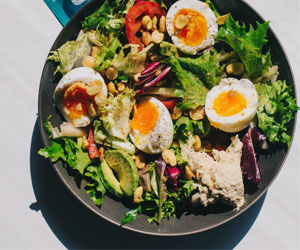

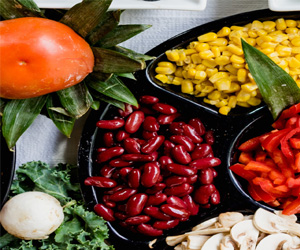
Embark On Your Culinary Journey
 2. Cost-Effective: Eating out or ordering takeout can be expensive. Cooking at home is often more budget-friendly and cost-effective in the long run.
2. Cost-Effective: Eating out or ordering takeout can be expensive. Cooking at home is often more budget-friendly and cost-effective in the long run.
3. Empowerment: Learning to cook empowers you to take charge of your diet and make informed food choices. It's a life skill that fosters independence.
4. Culinary Exploration: Cooking introduces you to different cuisines, ingredients, and flavors. It's a journey of exploration and creativity.
5. Sense Of Accomplishment: Preparing a meal from scratch and sharing it with loved ones can be immensely satisfying. It's a source of pride and accomplishment.
Tips For Cooking For Beginners
Here are some practical tips to help beginners embark on their culinary journey:
1. Start With The Basics: Begin with simple recipes and gradually work your way up to more complex dishes. Cooking is a skill that develops over time.
2. Gather Essential Tools: Invest in a few essential kitchen tools, such as a sharp knife, cutting board, pots, and pans. These items are the foundation of any kitchen.
A Path To Optimal Health
 The Role Of Vitamins
The Role Of Vitamins
Vitamins are involved in a multitude of physiological processes, including energy production, immune system function, and the maintenance of healthy skin, eyes, and bones. They act as cofactors in enzymatic reactions that are crucial for life. Each vitamin has specific roles and functions, and a deficiency in any of them can lead to various health problems.
Fat-Soluble vs. Water-Soluble Vitamins
Vitamins can be categorized into two groups: fat-soluble and water-soluble. Fat-soluble vitamins (A, D, E, and K) are stored in the body's fat tissues and liver. Excess amounts can accumulate, so it's essential to monitor their intake. Water-soluble vitamins (C and the B-complex vitamins, including B1, B2, B3, B5, B6, B7, B9, and B12) are not stored in the body, so regular intake is necessary to maintain optimal health.
The Importance Of A Balanced Diet
A balanced diet that includes a wide variety of foods is the most reliable way to ensure adequate vitamin intake. Fruits, vegetables, whole grains, lean proteins, and healthy fats should all be part of your daily menu. Eating a rainbow of fruits and vegetables is an excellent strategy to obtain a diverse range of vitamins and minerals.
A Comprehensive Approach To Health And Well-Being
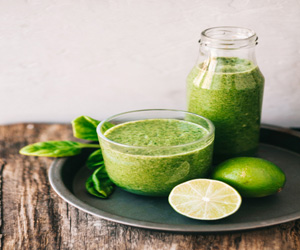 Physical wellness is often the aspect of holistic health that people are most familiar with. It encompasses regular exercise, a balanced diet, and adequate sleep. Physical wellness aims to keep the body in optimal condition, making it less susceptible to illnesses and promoting longevity.
Physical wellness is often the aspect of holistic health that people are most familiar with. It encompasses regular exercise, a balanced diet, and adequate sleep. Physical wellness aims to keep the body in optimal condition, making it less susceptible to illnesses and promoting longevity.
Exercise is not just about maintaining an ideal weight; it also has profound effects on mental health. Regular physical activity can reduce stress, improve mood, and boost self-esteem. A holistic approach to physical wellness also includes practices like yoga and meditation, which promote flexibility, balance, and inner calm.
Mental And Emotional Well-Being
Mental and emotional wellness are essential components of holistic well-being. Our minds are powerful, and the thoughts and emotions we experience can significantly impact our overall health. Stress management, mindfulness, and positive thinking are integral to this aspect of holistic wellness.
Practices like meditation and mindfulness allow us to become more aware of our thoughts and feelings, fostering emotional resilience and a greater capacity to handle life's challenges.
Celiac Disease, Gluten Sensitivity, And Wheat Allergies
 Common symptoms of celiac disease include gastrointestinal issues like diarrhea, bloating, and abdominal pain, as well as fatigue, anemia, and skin rashes. However, it's important to note that some individuals with celiac disease may experience no noticeable symptoms, making diagnosis challenging. Long-term complications can include malnutrition, osteoporosis, and an increased risk of other autoimmune diseases.
Common symptoms of celiac disease include gastrointestinal issues like diarrhea, bloating, and abdominal pain, as well as fatigue, anemia, and skin rashes. However, it's important to note that some individuals with celiac disease may experience no noticeable symptoms, making diagnosis challenging. Long-term complications can include malnutrition, osteoporosis, and an increased risk of other autoimmune diseases.
Gluten Sensitivity
While celiac disease is a well-defined medical condition, gluten sensitivity, or non-celiac gluten sensitivity (NCGS), is a less clearly understood phenomenon. People with gluten sensitivity experience symptoms similar to those of celiac disease, such as abdominal discomfort, fatigue, and headaches, but do not test positive for celiac disease or wheat allergy. It is often referred to as a "diagnosis of exclusion."
The precise cause of gluten sensitivity remains unclear, but it is thought to be a distinct condition from celiac disease and wheat allergy. Many individuals with NCGS report feeling better on a gluten-free diet, although the mechanism behind these symptoms remains a topic of ongoing research and debate.
Cultivating A Healthier Planet And Society
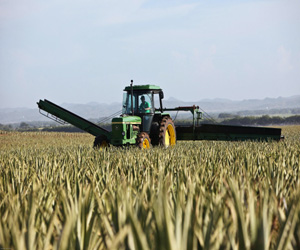 Local And Seasonal Sourcing: Sourcing food locally and seasonally is another fundamental aspect of the sustainable food movement. This approach is a response to the vast carbon footprint generated by long-distance food transportation. Choosing locally grown and seasonal ingredients reduces greenhouse gas emissions and supports local economies. It also encourages consumers to reconnect with the natural rhythms of their environment and to enjoy a diverse range of fresh, in-season produce.
Local And Seasonal Sourcing: Sourcing food locally and seasonally is another fundamental aspect of the sustainable food movement. This approach is a response to the vast carbon footprint generated by long-distance food transportation. Choosing locally grown and seasonal ingredients reduces greenhouse gas emissions and supports local economies. It also encourages consumers to reconnect with the natural rhythms of their environment and to enjoy a diverse range of fresh, in-season produce.
Reducing Food Waste: The sustainable food movement recognizes the global challenge of food waste. It calls for reducing waste at all stages of the food supply chain, from production and distribution to consumption. By preventing food from going to waste, we conserve resources, reduce the strain on landfills, and address issues of food scarcity and hunger.
Social Equity And Responsibility: Promoting social equity and responsibility is a core value of the sustainable food movement. It encompasses fair labor practices, food access for all, and the eradication of hunger. The movement seeks to eliminate disparities in access to nutritious, affordable food and strives for a world where food is a basic human right, not a privilege.
Healthy Eating: Healthy eating is a vital component of the sustainable food movement. It encourages a diet based on nutrient-dense, minimally processed foods. Sustainable food choices often align with healthier eating patterns, emphasizing fruits, vegetables, whole grains, and lean proteins. This approach not only supports individual well-being but also reduces the burden of chronic diseases on society.
A Culinary Hug For The Soul
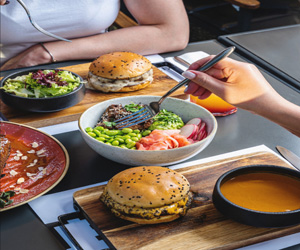
One of the remarkable things about comforting dishes is their versatility. They can be found in virtually every culture, and each culture has its unique take on what constitutes comfort food. In the United States, it might be a classic grilled cheese sandwich and tomato soup. In Italy, a hearty plate of pasta al ragù. In India, a bowl of creamy, aromatic chicken tikka masala. The diverse nature of comforting dishes reflects the universality of seeking comfort through food.
Comforting dishes hold a special place in our hearts, not only because they taste good, but because they evoke powerful emotions. They are linked to cherished memories—family gatherings, holidays, or a friend's comforting gesture during tough times. The mere scent of a dish can instantly transport you to a place of happiness and security.
From Uncertainty To Culinary Confidence
 Exploring And Experimenting: As kitchen novices grow in confidence, they naturally gravitate towards exploration and experimentation. Trying out new recipes and different cooking methods becomes an exciting adventure. There's a sense of wonder in discovering how ingredients interact and how flavors meld together. The kitchen evolves from a place of intimidation to one of creative expression.
Exploring And Experimenting: As kitchen novices grow in confidence, they naturally gravitate towards exploration and experimentation. Trying out new recipes and different cooking methods becomes an exciting adventure. There's a sense of wonder in discovering how ingredients interact and how flavors meld together. The kitchen evolves from a place of intimidation to one of creative expression.
Building Culinary Confidence: Culinary confidence is a gradual byproduct of this journey. It's the point where kitchen novices realize that they have not only acquired skills but also developed a passion for cooking. The satisfaction of preparing a delicious meal or mastering a challenging dish is immensely rewarding. Kitchen novices begin to relish the act of cooking and take pride in serving their culinary creations.